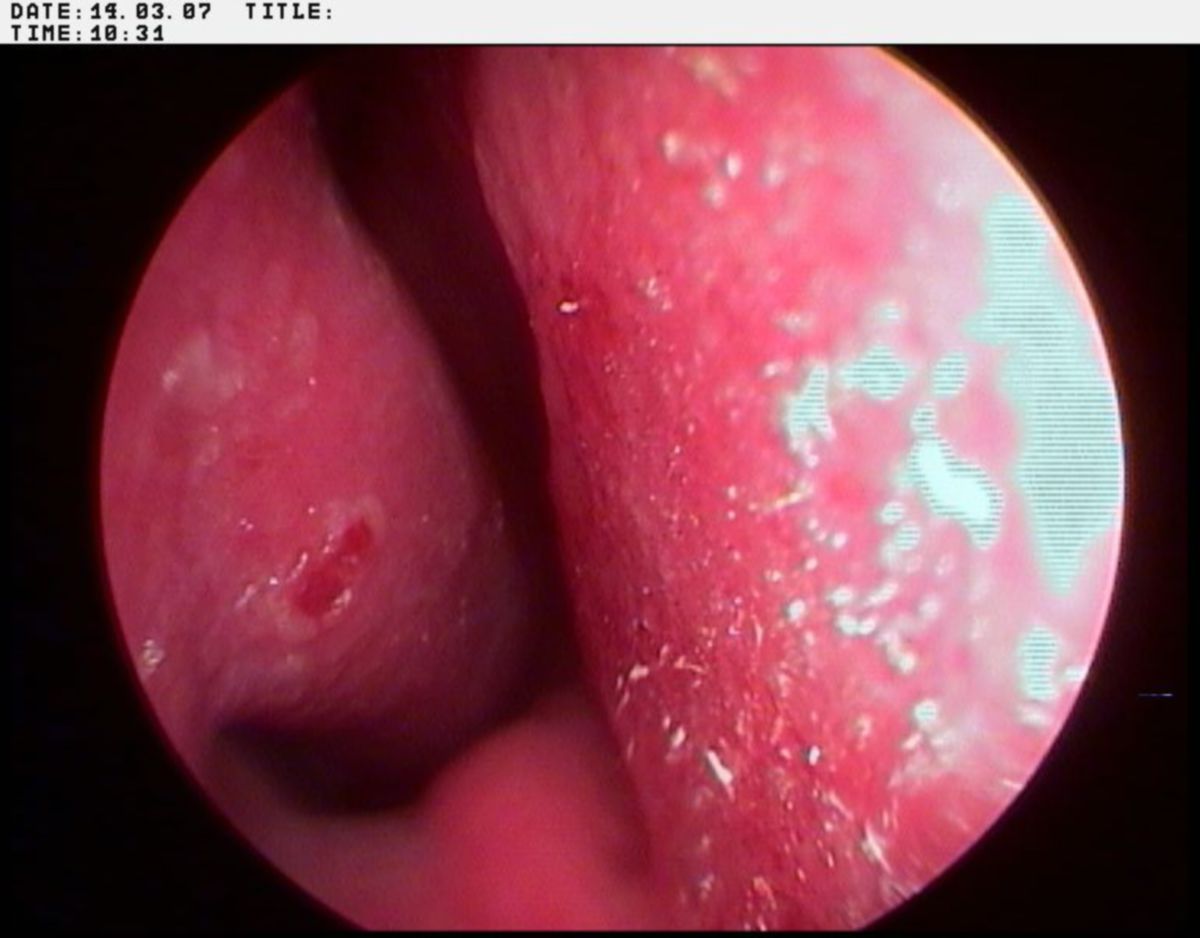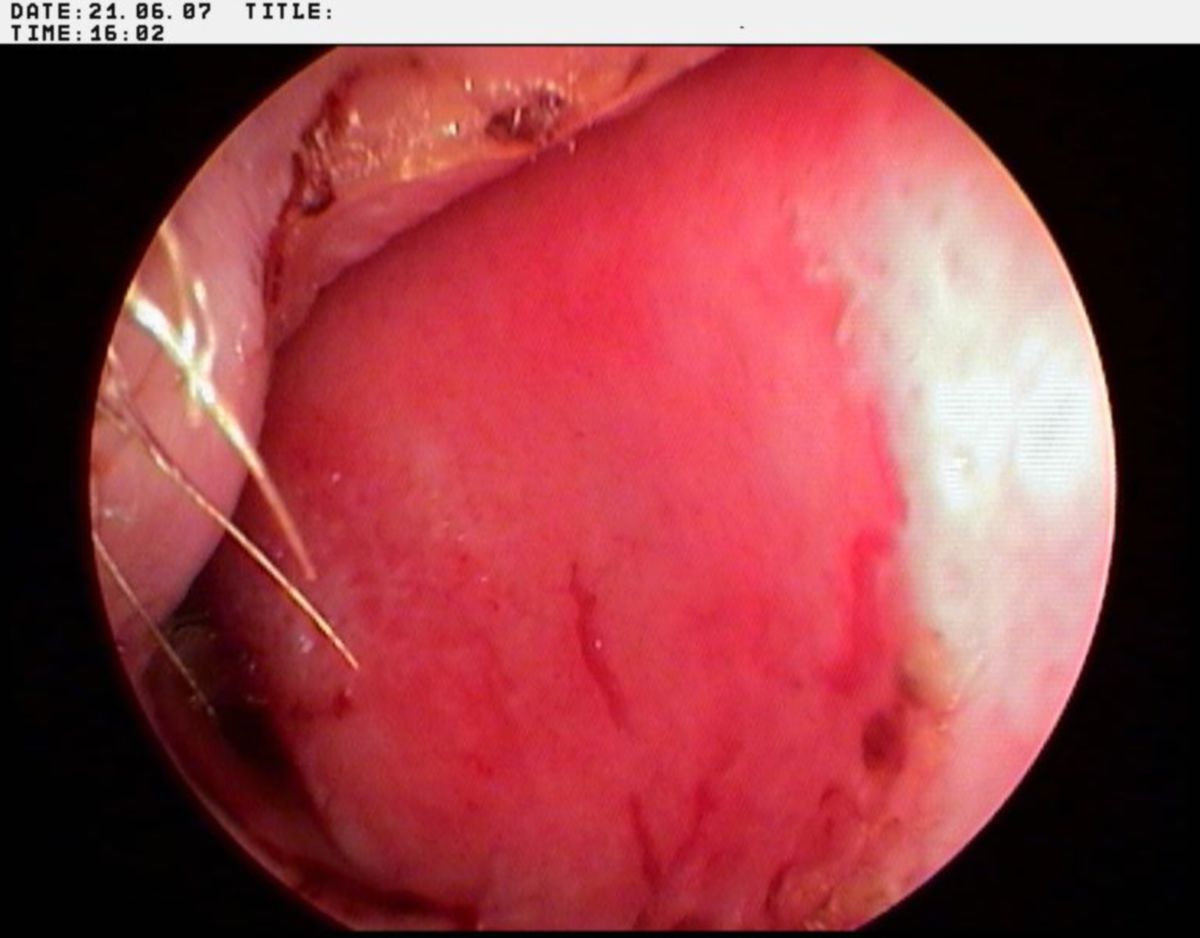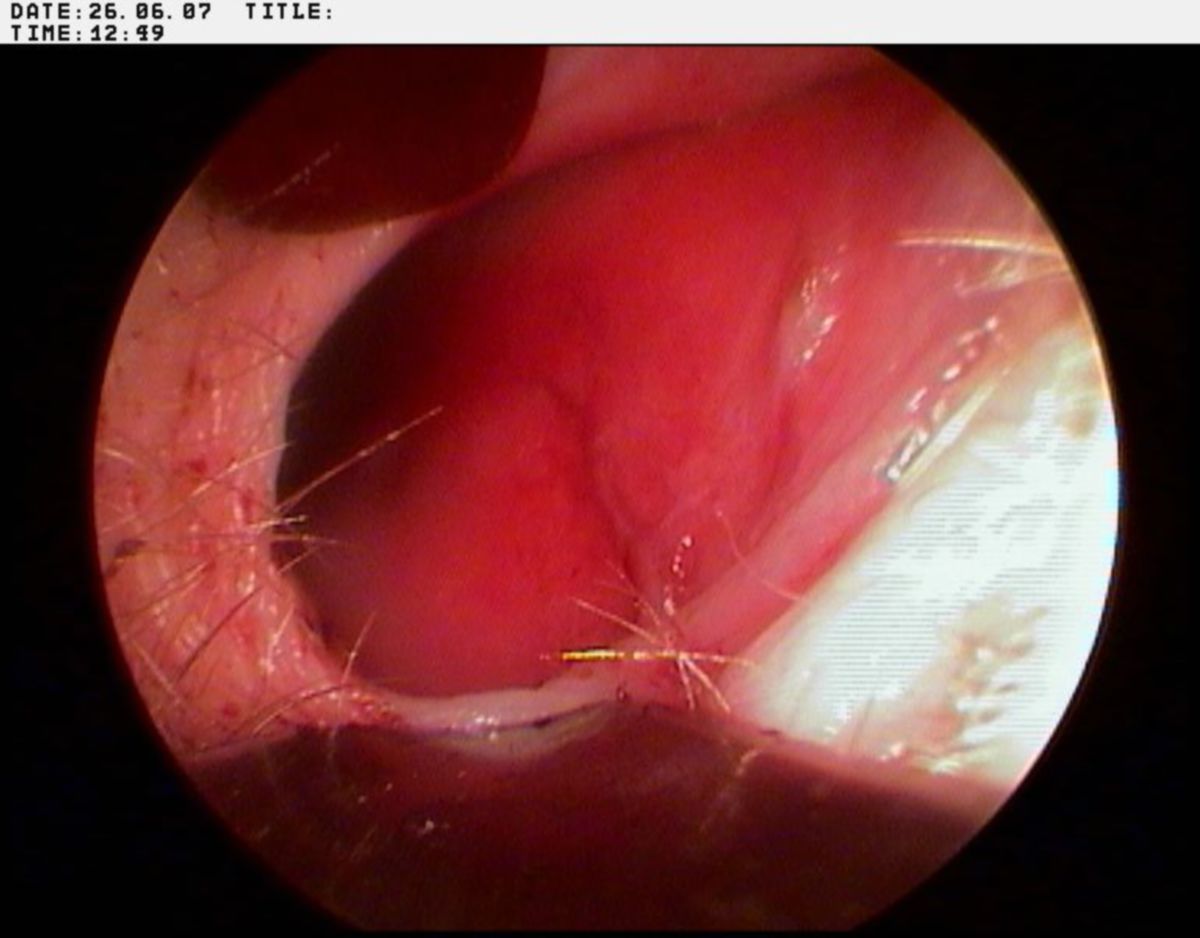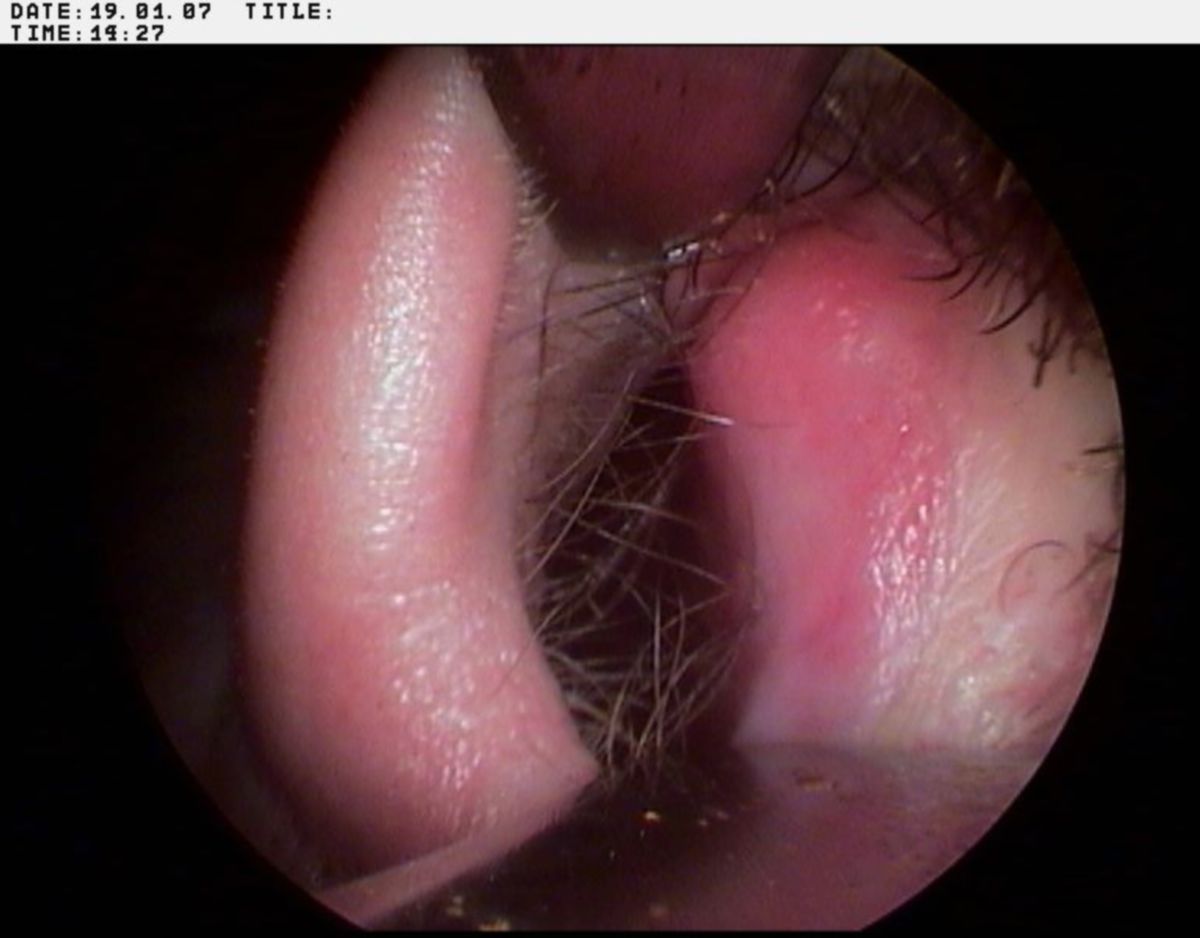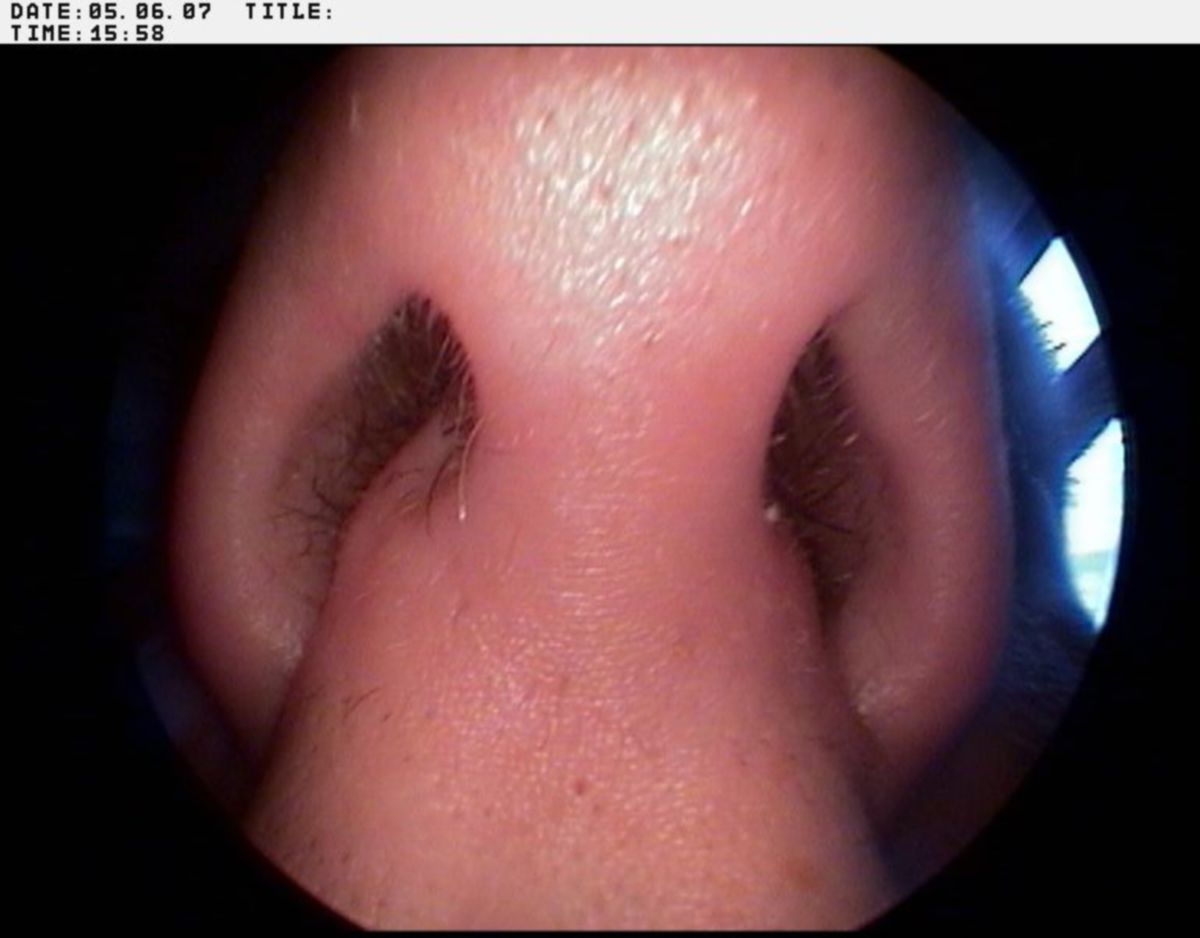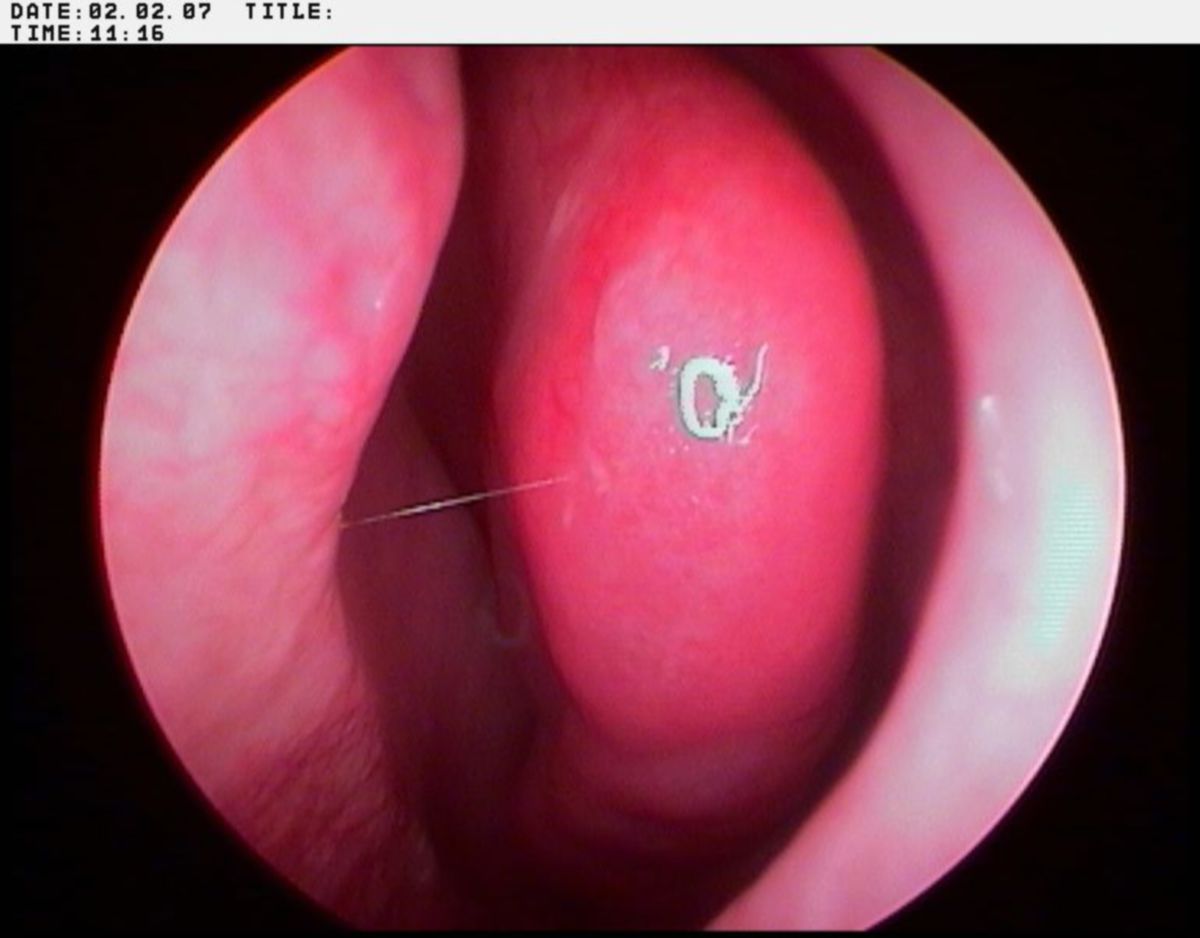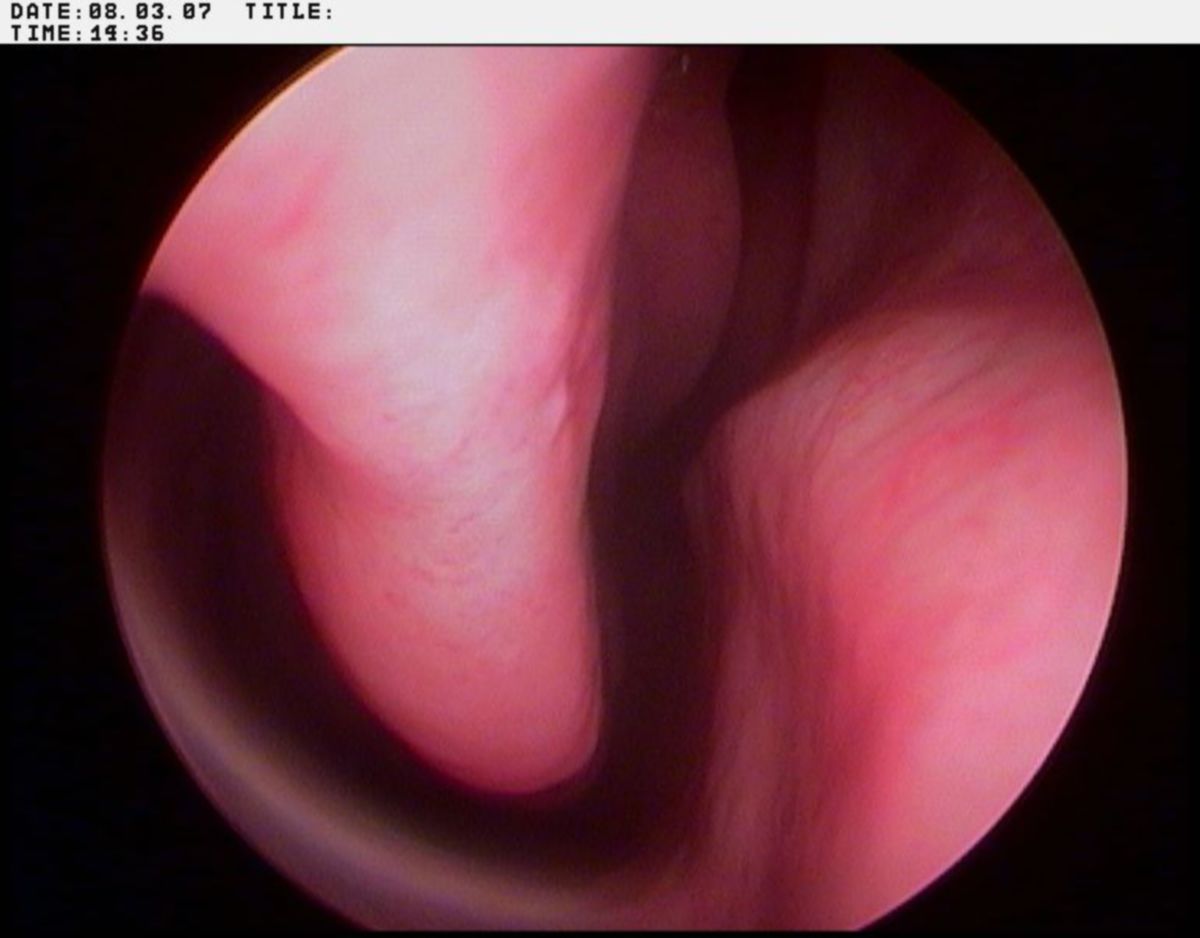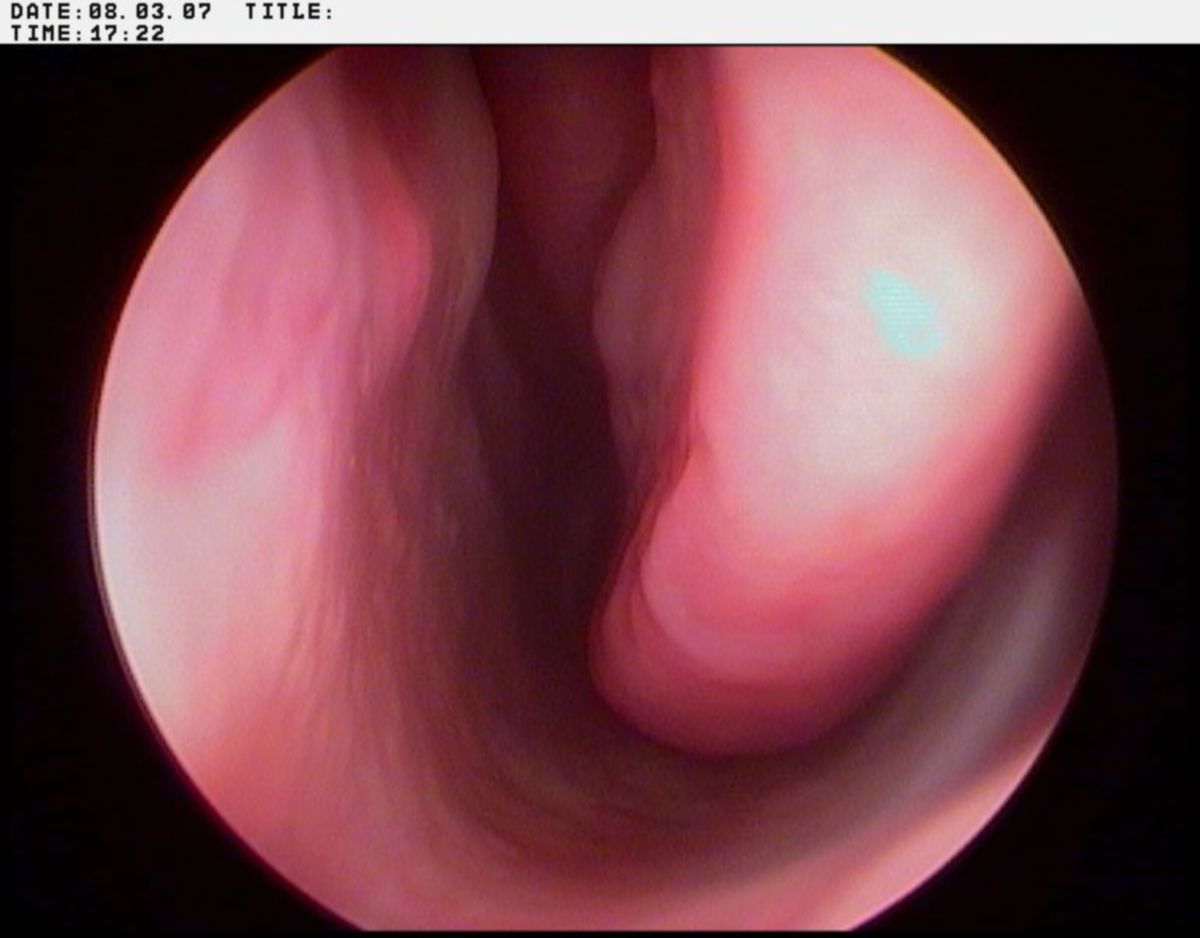Corpus: Nasal septum
1. Definition
The nasal septum is a continuous septum within the nose that separates the two nasal cavities. It is positioned within the piriform aperture of the skull.
2. Anatomy
The nasal septum is composed of two parts: a posterior bony portion and an anterior cartilaginous portion. The bony part includes the vomer and the perpendicular plate of the ethmoid bone. The cartilaginous part is primarily formed by the septal cartilage.
The most caudal section, known as the "mobile nasal septum," is freely movable. This region includes the skin between the nostrils, the attached connective tissue, and the medial crus of the alar cartilages. Typically, the nasal septum lies centrally, enabling unobstructed airflow through both nasal passages.
3. Pathology
A deviation of the nasal septum, referred to as a deviated septum, may affect either the cartilaginous or bony portions. Severe cases can result in an externally visible "crooked nose," leading to nasal obstruction and impaired airflow in one or both nasal cavities.
4. Clinic
4.1. Diseases
The anterior region of the nasal septum contains the Kiesselbach's plexus, a dense network of arteries and veins, which is the most common site for nosebleeds (epistaxis). Additionally, the anterior third of the nasal septum is where Rendu-Osler disease may present, and it houses the vomeronasal organ.
Bleeding into the septal tissue is known as a septal hematoma.
4.2. Diagnostics
- Nasal endoscopy
- Rhinometry
- Rhinomanometry
- Computed tomography


